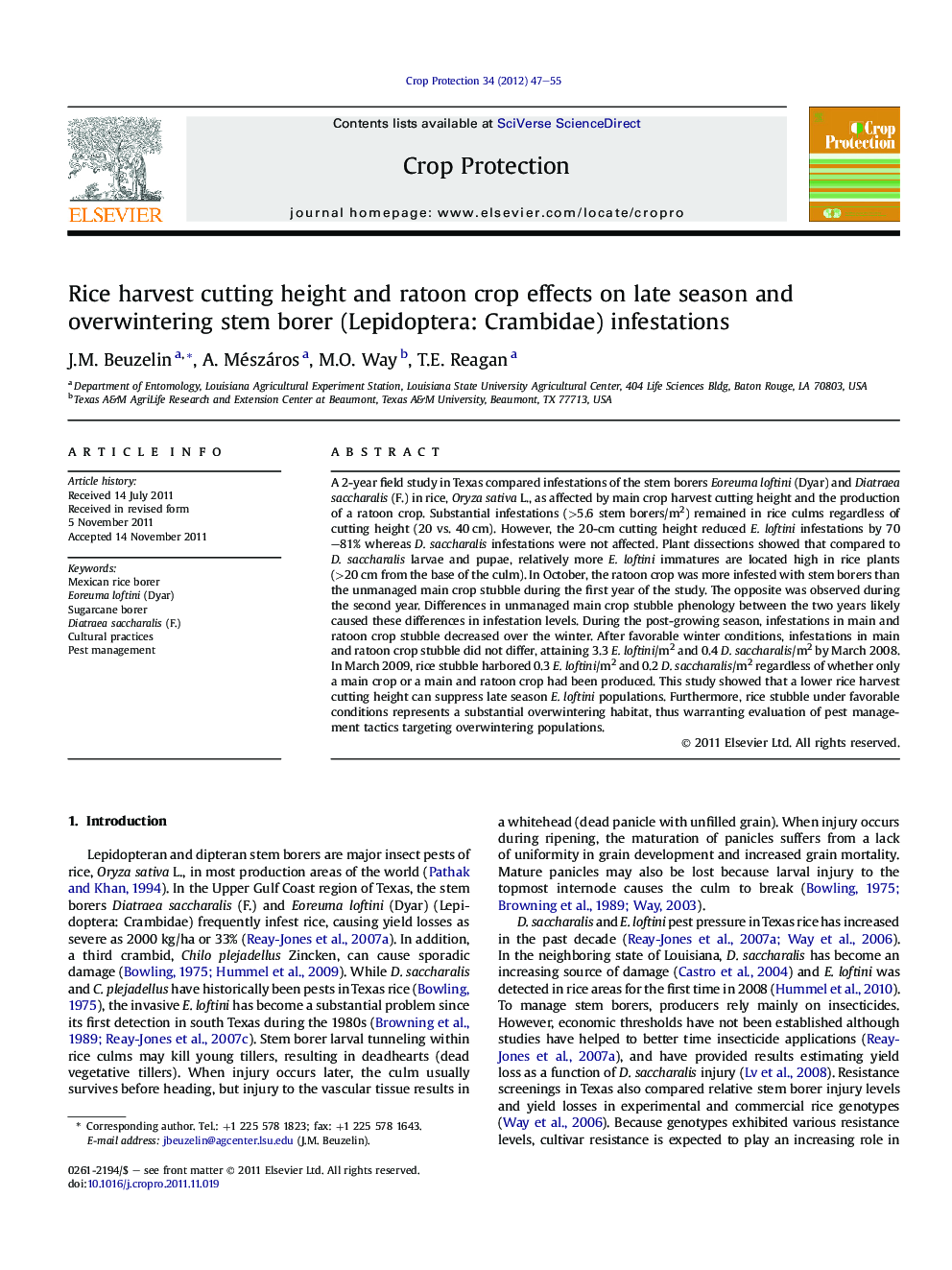| Article ID | Journal | Published Year | Pages | File Type |
|---|---|---|---|---|
| 4506399 | Crop Protection | 2012 | 9 Pages |
A 2-year field study in Texas compared infestations of the stem borers Eoreuma loftini (Dyar) and Diatraea saccharalis (F.) in rice, Oryza sativa L., as affected by main crop harvest cutting height and the production of a ratoon crop. Substantial infestations (>5.6 stem borers/m2) remained in rice culms regardless of cutting height (20 vs. 40 cm). However, the 20-cm cutting height reduced E. loftini infestations by 70–81% whereas D. saccharalis infestations were not affected. Plant dissections showed that compared to D. saccharalis larvae and pupae, relatively more E. loftini immatures are located high in rice plants (>20 cm from the base of the culm). In October, the ratoon crop was more infested with stem borers than the unmanaged main crop stubble during the first year of the study. The opposite was observed during the second year. Differences in unmanaged main crop stubble phenology between the two years likely caused these differences in infestation levels. During the post-growing season, infestations in main and ratoon crop stubble decreased over the winter. After favorable winter conditions, infestations in main and ratoon crop stubble did not differ, attaining 3.3 E. loftini/m2 and 0.4 D. saccharalis/m2 by March 2008. In March 2009, rice stubble harbored 0.3 E. loftini/m2 and 0.2 D. saccharalis/m2 regardless of whether only a main crop or a main and ratoon crop had been produced. This study showed that a lower rice harvest cutting height can suppress late season E. loftini populations. Furthermore, rice stubble under favorable conditions represents a substantial overwintering habitat, thus warranting evaluation of pest management tactics targeting overwintering populations.
► Lowering rice cutting height from 40 to 20 cm reduces Eoreuma loftini infestations. ► Lowering cutting height does not reduce Diatraea saccharalis infestations. ► Numerous E. loftini immatures infest the higher portion of rice plants. ► Rice stubble under favorable conditions is a stem borer overwintering habitat.
